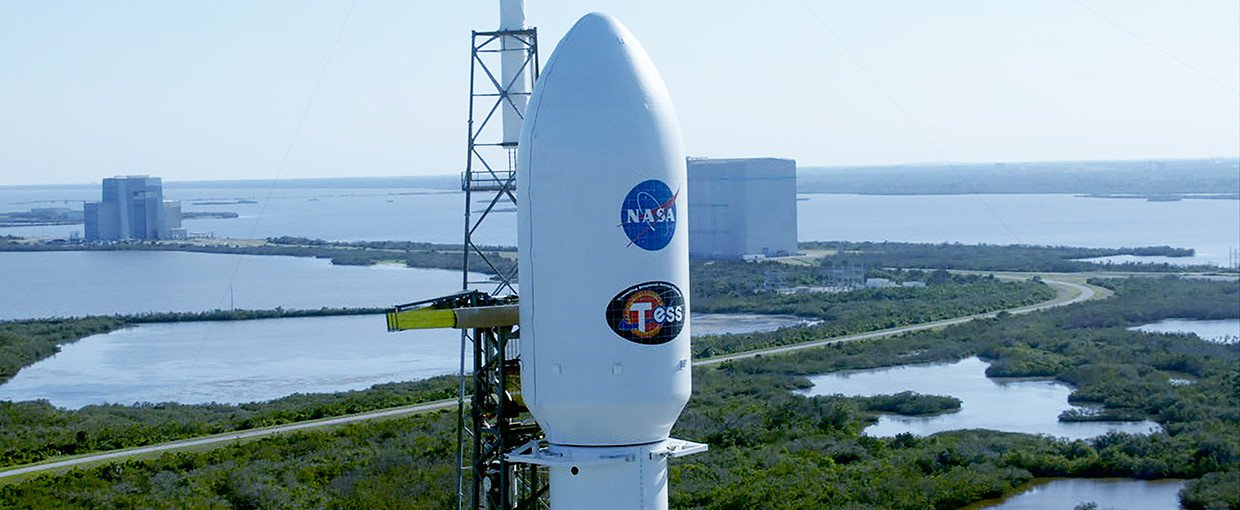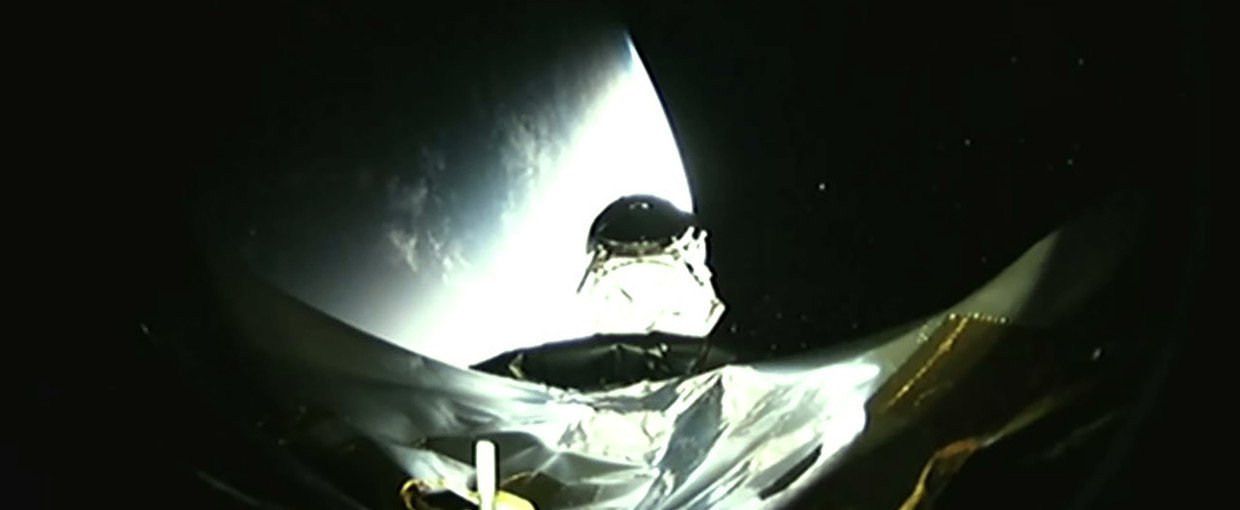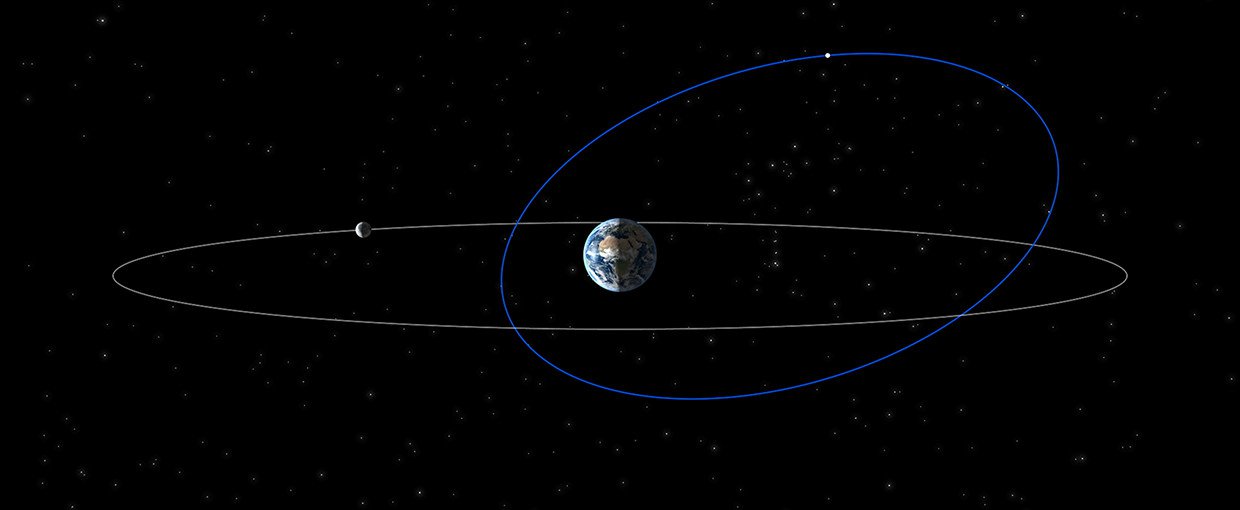
On January 5, 2010, NASA issued landmark press release : the Kepler Space Telescope had discovered its first five new extra-solar planets.
The previous twenty years had seen the discovery of just over 400 planets beyond the solar system. The majority of these new worlds were Jupiter-mass gas giants, many bunched up against their star on orbits far shorter than that of Mercury. We had learnt that our planetary system was not alone in the Galaxy, but small rocky worlds on temperate orbits might still have been rare.
Based on just six weeks of data, these first discoveries from Kepler were also hot Jupiters; the easiest planets to find due to their large size and swiftly repeating signature as they zipped around the star. But expectations were high that this would be just the beginning.
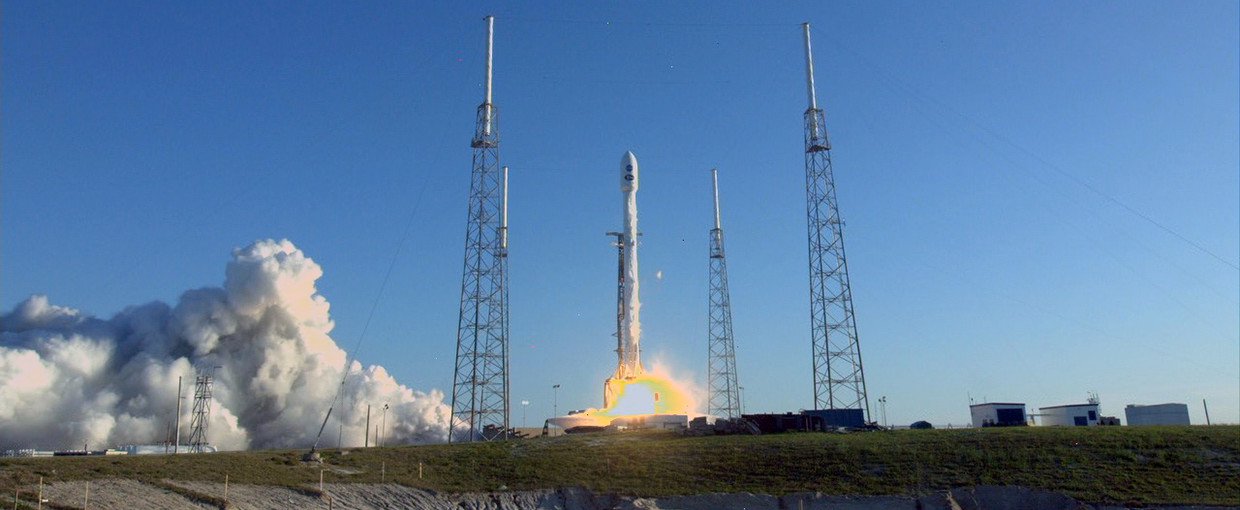
Liftoff of the SpaceX Falcon 9 rocket carrying NASA's TESS spacecraft.Image credit: NASA TV.
“We expected Jupiter-size planets in short orbits to be the first planets Kepler could detect,” said Jon Morse, director of the Astrophysics Division at NASA Headquarters at the time the discovery was announced. “It’s only a matter of time before more Kepler observations lead to smaller planets with longer period orbits, coming closer and closer to the discovery of the first Earth analog.”
Morse’s prediction was to prove absolutely right. Now at the end of its life, the Kepler Space Telescope has found 2,343 confirmed planets, 30 of which are smaller than twice the size of the Earth and in the so-called “Habitable Zone”, meaning they receive similar levels of insolation –the amount of solar radiation reaching a given area–to our own planet.
Yet, the question remains: were any of these indeed Earth analogs?
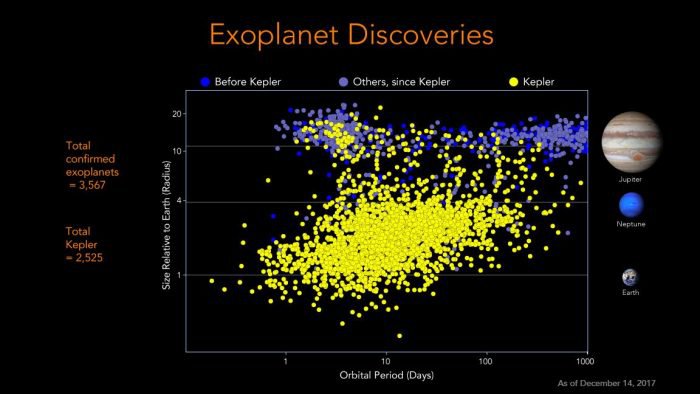
In just a few decades, thanks to Kepler, the Hubble Space Telescope and scores of astronomers at ground-based observatories, we have gone from suspecting the presence of exoplanets to knowing there are more exoplanets than stars in our galaxy.Image credit: NASA/Ames Research Station; Jessie Dotson and Wendy Stenzel.
It was a question that Kepler was not equipped to answer. Kepler identifies the presence of a planet by looking for the periodic dip in starlight as a planet passes across the star’s surface. This “transit technique” reveals the planet’s radius and its distance from the star, which provides an estimate of the insolation level — the amount of solar radiation reaching a given area — but nothing about the planet surface conditions.
To distinguish between surfaces like those of Earth or Venus, a new generation of space telescopes is required.
These are the tasks before NASA’s long-awaited flagship James Webb Space Telescope (JWST) and WFIRST (if ultimately funded,) Europe’s ARIEL mission and potentially what would be the 2030s flagship space telescope LUVOIR, if it is selected by NASA over three competitors. These telescopes will be able to probe exoplanet atmospheres and will have the capacity to measure the faint reflected light of the planets to study, via spectroscopy, their composition, geology and possibly biology.
But there is one big problem. While Kepler has found thousands of exoplanets, very few are suitable targets for these studies.
At the time of Kepler’s launch, we had no idea whether planet formation was common or anything about the distribution of planet sizes. Kepler therefore performed a planet census. By staring continuously at a small patch of the sky, Kepler waited out the time needed to see planets whose orbits took days, months and then years to complete.
From this, we discovered that planet formation takes place around the majority of stars, small planets are common and planets frequently get shoveled inwards onto short orbits close to the star. The cost of focusing on a small patch of sky is that many of the planets Kepler discovered were very distant. This is like staring into a forest; if you try to count 100 trees by looking in just one direction, many will be deep in the wood and far away from you.

Looping animated gif of the unique orbit TESS will fly. At 13.7 days, it is exactly half of the moon’s orbit, which lets the moon stabilize it. During the part of the orbit marked with blue, TESS will observe the sky, collecting science data. During the oImage credit: NASA’s Goddard Space Flight Center.
These distant planets are great for number counting, but they are too far away for their atmosphere or reflected light to be detected. In such cases, even enticing properties such as an orbit within the habitable zone have little meaning as follow-up studies that could probe signs of life are not possible.
Yet the census result that short-period planets were common allows for an entirely new type of mission. A survey to focus only on the bright, close stars whose planets would be near enough to detect their atmospheres with instruments such as the JWST. Prior to Kepler, we did not know such a telescope would find any planets. Now, we can be certain.
And that is why TESS was launched on Wednesday.
Standing for the Transiting Exoplanet Survey Satellite, TESS is a NASA mission to look for planets around bright stars less than 300 light years from Earth. All told, TESS will look at 200,000 stars spread over 85% of the sky in two years. For comparison, the field of view for Kepler had a sky coverage of just 0.25% and looked as deep as 3,000 light years into space.
Such a wide sweep means TESS cannot spend long staring at any one position. TESS will observe most of the sky for about 27 days, which is ample for detecting planets on ten day orbits, the most common orbital period found by Kepler. Over the ecliptic pole (90 degrees from the Sun’s position), TESS will observe somewhere between 27 and 351 days. This region is where the JWST will be able to study planets throughout the year.
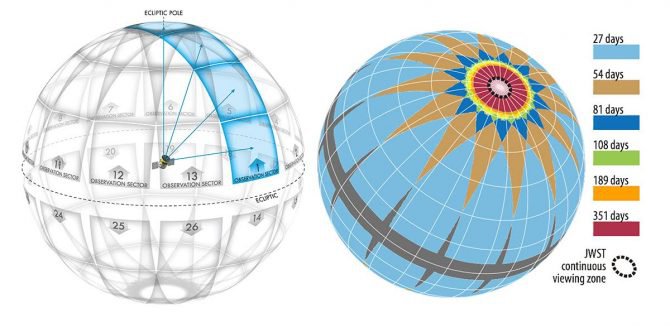
Image showing the planned viewing regions for the Transiting Exoplanet Survey Satellite mission.Image credit: Roland Vanderspek, Massachusetts Institute of Technology.
Bright and close by red dwarf stars, and the planets around them, are a prime target for TESS. These stars are smaller and cooler than our sun, which makes it easier to spot the subtle dip in brightness from smaller planets. The cooler temperatures also mean that planets can orbit much closer to the star without roasting. A ten day orbit is still unlikely to be within the habitable zone, but orbits lasting between 20 – 40 days (which TESS will spot near the ecliptic poles) may receive similar insolation levels to the Earth.
A recent paper submitted to the Astrophysical Journal by Sarah Ballard, an exoplanet astronomer at MIT, estimated that TESS may find as many as 1000 planets orbiting red dwarfs and around 15 of these may be less than twice the size of the Earth and orbit within the habitable zone; ideal candidates for a JWST observation.
Previous predictions for TESS suggested the telescope will find a total (all orbits around all stars) of 500 planets less than twice the size of the Earth and 20,000 exoplanets over the first two years. Ballard’s new numbers for planets around red dwarfs are 1.5 times higher than previous predictions, so these totals look likely to be lower limits.
While future atmospheric studies with JWST are exciting, these observations will still be very challenging. Time on this multi-purpose telescope will also be limited and we have to wait until 2020 for the launch. However, the bright stars targeted by TESS are also perfect for a second type of planet hunting method: the radial velocity technique.
This second-most prolific planet-hunting technique looks for the slight shift in the wavelength of the light as the star wobbles due to the gravitational pull of the planet. As the star moves away from Earth, the light waves stretch and redden. The light shifts towards blue as the star wobbles back our way. The result is a measurement of the planet’s minimum mass. The true mass can be found if the inclination of the orbit is known, which can be measured if the planet is also seen to transit.
With both a transit measurement from TESS and a radial velocity measurement from another ground-based instrument such as HARPS, on Europe’s La Silla Telescope in Chile, the average density of the planet can be calculated.

The transit technique identifies planets by the tiny drop in starlight measured as a planet passes in front of the starImage credit: NASA.
The planet density can reveal whether a world is gaseous or rocky or heavy in volatiles such as water. This is a particularly interesting question for the “super Earths” that are one of the most common class of planet found by Kepler, but for which we have no solar system analog. While an average density can only be a crude estimate of the planet interior, it can potentially be measured for a large number of the planets found by TESS and is an extremely useful guide for narrowing down planet formation theories.
But before TESS can find these planets, it first has to get into a rather unusual orbit. From launch on the SpaceX Falcon 9, TESS will boost its orbit using solid rocket motors (ignitable cylinders of solid propellent) until it is able to get a kick from the Moon’s gravity. The need for the lunar push was why the launch window for TESS was a very brief 30 seconds.
After the lunar shove, TESS will enter a highly elliptical orbit around the Earth, circling our planet every 13.7 days. This means TESS will orbit the Earth twice in the time it takes the Moon to orbit once: a situation known as a 2:1 resonance.
Planets that orbit in very close packed systems are often seen to be in similar resonant orbits. For examples, the TRAPPIST-1 worlds are in resonance and within our own solar system, the Jovian moons of Io, Europa and Ganymede orbit Jupiter in a 4:2:1 resonance.
This common occurrence is because resonant orbits are very stable, due to the pull from the gravity of the neighboring planets or moons exactly cancelling out. It is exactly for this reason that such an orbit has been chosen for TESS. With the gravitational tugs from the Moon cancelling out over an orbit, TESS’s path around the Earth will remain stable for decades. This potentially allows the mission to continue far beyond its designated two year lifespan.
TESS will take about 60 days to reach its final orbit and power-on, initialize and test its instruments. Science operations are expected to begin properly 68 days after launch. The first full data release from TESS is planned for next January, but with science operations starting in the summer we may hear the first results from TESS in the second half of this year.
Unlike with Kepler, this will be the data that will let us get to know our neighborhood.
